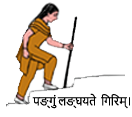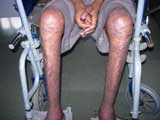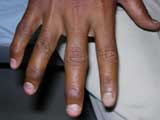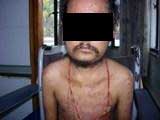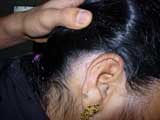Psoriasis is a chronic autoimmune skin condition due to a rapid reproduction of cells. It results in red or pink dry, raised patches of skin thickening associated with scaling. Skin psoriasis affects almost 1% population. Psoriasis commonly affects skin over elbows, knees, shin, and scalp. There are various types of skin psoriasis – psoriasis vulgaris being the most common form.
There appears to be a peculiar association between psoriasis and HIV infection. Psoriasis usually has remissions and relapses – worsening in colder season and improvement in a warmer climate.
The severity of psoriasis can be assessed by measuring the area involved and the amount of redness, thickening, and scaling in the involved area. Unfortunately, there is no cure for psoriasis. However, dermatologists can control the disease with local applications (retinoids, vitamin D analogs, moisturizers, and immunomodulators), phototherapy (ultraviolet light with or without psoralen sensitization), and systemic drugs such as methotrexate and new biologic agents.
5-25% of psoriasis patients develop arthritis, known as psoriatic arthritis (PsA). Severe skin disease and a longer duration of skin psoriasis are often associated with arthritis. PsA can also occur in patients with quiescent psoriasis. In addition, some patients may not have skin psoriasis but have a first- or second-degree relative with psoriasis. Children, too, can develop psoriasis and PsA.
Features
Many patients with PsA have diffuse joint pains without any swelling. The swelling usually affects less than five joints at a time. The joint involvement is asymmetric. Fingers, toes, and large joints of limbs are usually affected and may be mistaken for gout. The pain is generally very severe in the beginning. Joint swelling is not like rheumatoid arthritis – it is more firm. The involvement of terminal joints of fingers and toes is typical of PsA. Other characteristic features of PsA include swelling of the entire finger or toe (sausage digit) and enthesitis. Enthesitis is swelling in the area where muscle tendons attach to bones. Typical sites of enthesitis in PsA are the outer side of the elbow, inner side of the knee, and back of the heel. PsA can also involve the spine in about 5% of cases. Spinal involvement manifests as pain and stiffness in the back. In about 15% of cases, joints of hands and feet get severely mutilated and deformed.
Investigations
PsA is a clinical diagnosis, and no blood tests are required. A negative rheumatoid factor helps in diagnosis. Uric acid is usually raised due to increased cell turnover (mistaken diagnosis of gout). Raised inflammatory markers such as ESR and CRP indicate active and more severe disease. X-Rays of involved joints show new bone formation around the joint and bone - a typical finding of PsA. Ultrasound and MRI examinations can help in the diagnosis of enthesitis. Other blood tests are ordered for monitoring therapy.
Assessments
The group of research and assessment of psoriasis and psoriatic arthritis (GRAPPA) has issued guidelines for assessing disease for planning appropriate therapy. The assessment is based on the number of joints involved, the extent of skin involvement, the number of enthesitis sites, and the response of dactylitis and a spinal disease to therapy. The condition can then be classified as mild, moderate, or severe. All patients also need to be assessed for function, fatigue, and quality of life.
Comorbidities
Many disease conditions are usually associated with psoriasis. These include raised uric acid levels, raised lipids, obesity, high blood pressure, diabetes, colitis, bone changes, eye inflammation, heart disease, atherosclerosis, and shortening of lifespan (by about ten years). Anxiety and depression usually accompany and lead to social isolation and related problems. The onset of psoriasis at a young age appears to be an adverse prognostic factor. Undertreatment of psoriasis may contribute to an increased incidence of comorbidities in psoriasis patients.
Treatment
All patients with psoriasis and PsA must be aggressively treated jointly by a dermatologist and a rheumatologist. Treatment of PsA includes drugs such as methotrexate (which works on skin as well as joints), sulphasalazine, and leflunomide. Newer biological medications approved for PsA include etanercept, infliximab, and adalimumab. Biological agents are particularly advised in spinal involvement, nonresponsive enthesitis, finger swellings, and severe disease. Vitamin D and calcium supplements are beneficial in these patients. A nutritious diet, avoidance of alcohol and smoking are also advisable. Painkillers, physiotherapy exercises, local steroid injections (for joints and entheses), and surgery are required in selected cases. Patient education and support are highly essential in the management of this chronic relapsing disease.
